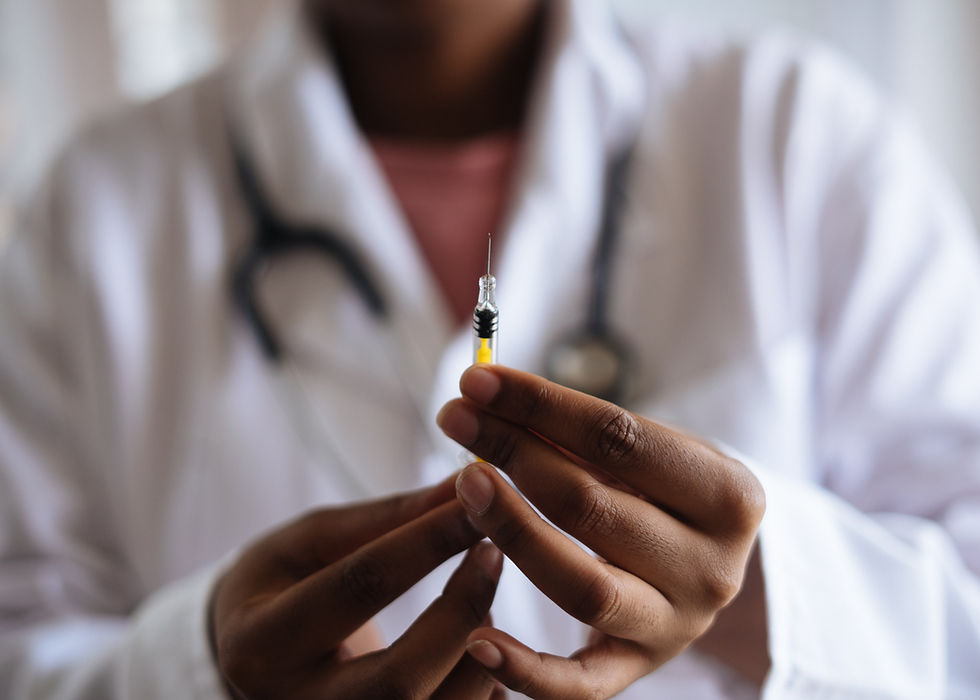Needleless COVID-19 Vaccine Coming Soon!
- Verbalance Team

- Nov 1, 2021
- 3 min read
Researchers have been working to develop an alternative that can transport a pain-free drug through the skin, a needle-free Covid-19 - Vaccine patch, since the beginning of COVID-19 - Pandemic. This could help children and people with needle phobias. Furthermore, skin patches could help in the marketing effort, as they do not have the cold chain requirements that increase the vaccine's effectiveness.
A new mouse study published in Science Advances shows promising results in this area. In Australia and the US, the teams used a one-centimeter patch adorned with more than 5,000 microscopic nails. Like the tip of a coat of an experimental vaccine, the patch is clicked onto an applicator that resembles an ice hockey puck. It feels like you're getting pleasant skin contact, says virologist David Muller from the University of Queensland, one of the paper's co-authors. You can't see it because of its tiny nails, Muller says.
Researchers used a so-called subunit of the vaccine that reproduces the spines that adorn the surface of coronaviruses. They found that a subset of mice given a dose of the subunit contained an additive called adjuvant, which can be used to stimulate an immune response. The mice were injected with the patch two minutes later. The immune system of those who received the patch produced higher levels of neutralizing antibodies after two doses, even when they were in the lungs, which is essential for stopping COVID-19, and the patch performed better than the syringe version.
When vaccines are injected into our muscles, muscle tissue does not contain many of the immune cells needed to respond to the drug, Muller explains. In addition, tiny peaks of localized skin death can alert the body to a problem without triggering a major immune response. But it doesn't hurt, says Muller, who wasn't involved in the investigation.

For scientists, the logistical benefits are not obvious. You do not need a trained doctor to administer the vaccine. It can be used by anyone, Muller says. The vaccine, which is coated in dry patches, is stable at 25 degrees Celsius for up to 30 days and at 40 degrees Celsius a week for up to 30 days for the Moderna Pfizer vaccine compared to several hours at room temperature. This offers a great advantage for developing countries.
Burak Ozdoganlar, a professor of engineering at Carnegie Mellon University in Pittsburgh, has been working on this technology since 2007. He sees an advantage in not administering a vaccine through the skin that activates an immune response similar to intramuscular injection, he said. This could be an important factor for developing countries that are having difficulty obtaining sufficient COVID-19 vaccines. The patches used in the study published on Friday are from Australian company Vaxxas. He produces 300 to 400 patches a day, but his lab was unable to test them with the RNA vaccine that emerged during the pandemic because they are not approved by Pfizer and Moderna.
A human trial is scheduled to begin in April. Two other American companies are also in the running: Micron Biomedical and Vaxess. Micron, founded in 2013 and based in Massachusetts, is working on a different type of patch, a microneedle that dissolves in the skin. The company says it has the advantage of requiring fewer nails in the patch, which is made up of biocompatible proteins and polymers.
We have opened a factory in Boston, funded by the US National Institutes of Health. I am working on a combination product for COVID and seasonal flu, which can be administered for personal use to patients at home,' says Managing Director Michael Schrader. The COVID-19 vaccine we use is manufactured by Medigen, a company based in Taiwan.
The goal is to produce enough patches to vaccinate 2,000 to 3,000 people. Clinical trials are scheduled for the summer of next year. The biggest challenge in production is that the manufacturer must be able to produce enough patches in series. "If you want to bring a vaccine to market, you have to make hundreds of millions. We don't have the scale for it these days, "Schrader said.
The future, he believes, is inevitable. I think what you're going to see in the next decade is that the pandemic is going to change the way we get vaccines globally, "he said. It will also drive the emerging industry to attract more investors, he added.






Comentarios